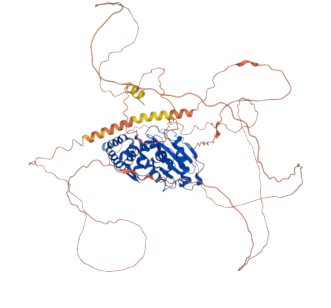Michigan State University Astrophysicists Discover Cosmic Ray Origins

EAST LANSING, Mich. – Researchers at Michigan State University (MSU) have made significant strides in understanding the origins of cosmic rays, high-energy particles believed to originate from various astrophysical phenomena. This groundbreaking research, led by Shuo Zhang, an assistant professor of physics and astronomy at MSU, was presented at the 246th meeting of the American Astronomical Society held in Anchorage, Alaska, on June 10, 2025.
Cosmic rays, which have puzzled scientists since their discovery in 1912, consist of particles that travel close to the speed of light and are thought to stem from sources within the Milky Way galaxy and beyond. Zhang, along with her research group, has led two studies aimed at identifying potential sources of these high-energy particles, which include black holes, supernova remnants, and regions of star formation.
According to Dr. Shuo Zhang, “Cosmic rays are a lot more relevant to life on Earth than you might think. About 100 trillion cosmic neutrinos from faraway sources like black holes pass through your body every second. Don’t you want to know where they came from?” This inquiry is critical, as understanding the origins of cosmic rays could unlock fundamental questions regarding galaxy evolution and the nature of dark matter.
The first study, conducted by Stephen DiKerby, a postdoctoral researcher in Zhang’s group, investigated a mysterious PeVatrons candidate identified by the Large High Altitude Air Shower Observatory (LHAASO). DiKerby utilized X-ray data from the XMM-Newton space telescope to uncover a pulsar wind nebula, an expanding bubble rich with relativistic electrons, thus establishing this PeVatron as a pulsar wind nebula type of cosmic ray source. This finding is significant as it represents one of the few instances where scientists have determined the nature of a PeVatron.
The second study involved three undergraduate students from Zhang’s team—Ella Were, Amiri Walker, and Shaan Karim—who employed NASA’s Swift X-ray telescope to analyze X-ray emissions from lesser-explored LHAASO cosmic ray sources. Their research calculated upper limits for the X-ray emissions, potentially paving the way for future studies in this area.
“Through identifying and classifying cosmic ray sources, our effort can hopefully provide a comprehensive catalog of cosmic ray sources with classification,” Zhang noted. This catalog could serve as a legacy for future neutrino observatories and traditional telescopes to conduct in-depth studies on particle acceleration mechanisms.
Looking ahead, Zhang’s team plans to further explore cosmic ray sources by combining data from the IceCube Neutrino Observatory with observations from X-ray and gamma-ray telescopes. This research aims to unravel why certain cosmic ray sources emit neutrinos while others do not and to elucidate the processes involved in neutrino production. “This work will call for collaboration between particle physicists and astronomers,” Zhang said, emphasizing the interdisciplinary nature of the project.
This research is supported by several NASA observation grants and a National Science Foundation IceCube analysis grant, highlighting the collaborative effort between various scientific entities in the pursuit of cosmic knowledge. As the scientific community continues to explore the universe's mysteries, discoveries like those made by Zhang and her team at MSU not only deepen our understanding of cosmic phenomena but also enrich our knowledge of fundamental physics and the universe at large.
Advertisement
Tags
Advertisement





